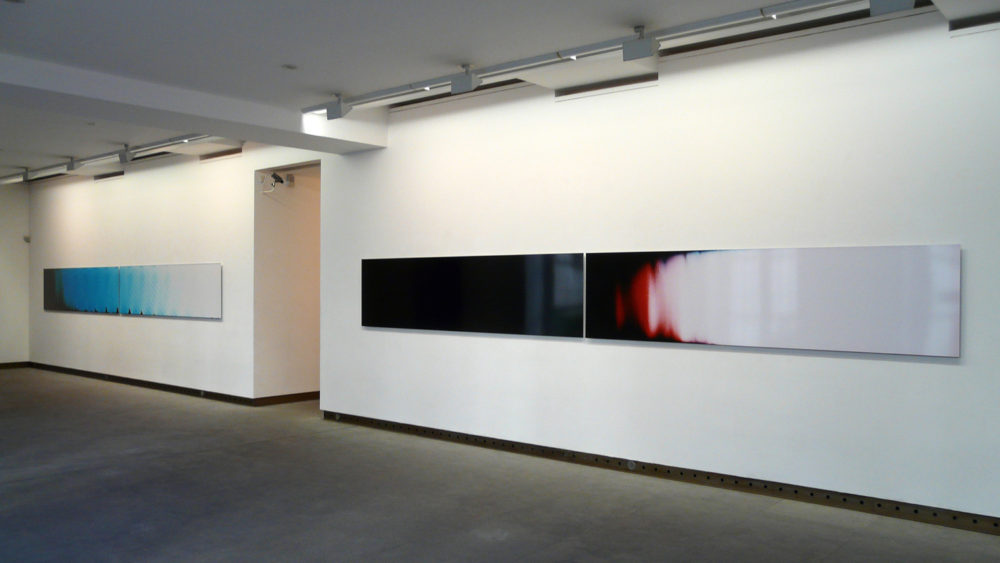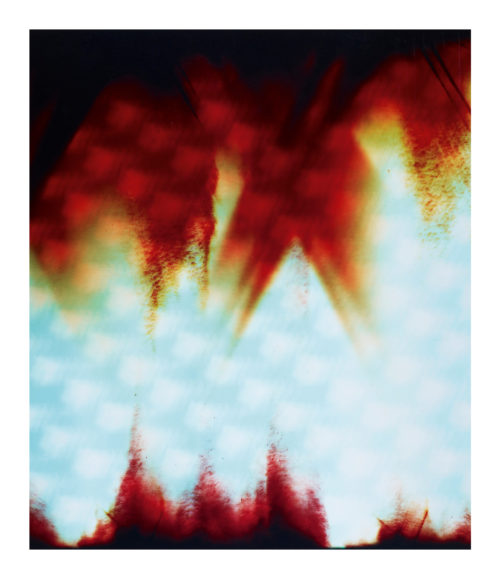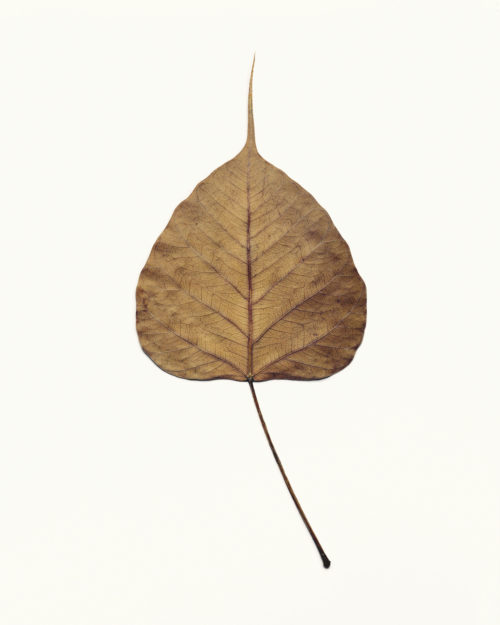Ann-Christin Bertrand in conversation with Adam Broomberg.
When Adam and I meet at his studio, he offers me a copy of the recently published War Primer 2 book1. A mass-produced version of what has now become a rare art object, their handmade War Primer 2, of which they only made 100 copies. On our way to a nearby café where we can be undisturbed for the interview, we start our conversation by talking about the differences between these two objects, the original and its mass-produced facsimile, as well as about the importance of materiality, of the object and its aura, especially when it comes to offering a different way of reading images of conflict.
ACB: Adam, War Primer 2 is the result of intensive engagement with Bertolt Brecht’s archive in Berlin. By appropriating his original War Primer, developing it further and adapting it to 2011 – the year in which you produced the work – it has been a project that challenges the question of how to read images of conflict.The act of taking images that didn’t exist physically from the Internet, making them exist, putting them into dialogue to the original images of Brecht’s War Primer and trying to make sense of what we are seeing, plays a crucial role in the work. What role did the aspect of materiality, of tactility play in particular in the process of creating War Primer2?
AB: For a work that offers a meditation on the role of digital images of war distributed on the various platforms on the Inter- net, materiality plays a disproportionately large role. Maybe it has something to do with the genesis of the project. It began at Brecht’s archive at the Akademie der Künste, where curator Erdmut Wizisla let us hold and leaf through both Brecht’s personal Bible (into which he had pasted images and underlined certain texts) and his original collages, or photo-epigrams as he called them, that eventually became the raw material for Kriegsfibel, the original War Primer, published in East Germany in 1955. The collages are set on large pieces of rich black cardboard with the images crudely cut out and pasted down, the poems typed out on paper and equally as brutally cut out and glued down. To hold these objects and imagine Brecht cutting out the images from the newspaper each day with the world in a state of absolute turmoil was very moving. Initially we undertook the project to create and update War Primer, using similar strategies, looking at newspapers and cutting out images, but we soon realised that if Brecht were alive now he would be scouring the Internet; he didn’t suffer from nostalgia. So we began to collect images from both the surface and the deep corners of the web, images all connected to the representation of the so-called war on terror.
We bought the last 100 copies of the original War Primer from the publisher Libris, who were excited about our engagement with a book that never really sold or gathered much attention when it was published in English in 1988. In order to make our 100 copies, we literally had to rip the books apart. We broke the spines, which allowed us to silk-screen onto the pages. Although the images were taken from the Internetwe printed them out and saw what they looked like pasted over the original pages of the book. So the process was very physical and tactile. You don’t get exactlyhow labour-intensive it was when you look at the newbook. It took us six months to hand-make the 100 copies. They were never intended to be rare art objects, we were just not physically capable of making more than 100. We charged 100 pounds for each one since we didn’t have the copyright to publish the images. We were advised to charge what the production costs were and no more or less.
ACB: The difference between the original War Primer 2 object and the newly reprinted version of the book is that both have exactly the same content, yet a totally different tactility. What was important during the process of making the original War Primer 2 object, its materiality and object – like character, the visibility of the process, gets somehow lost, resulting in a completely different experience of perception. So why did you decide to nevertheless publish a reprinted version?
AB: We decided this in order to make it readily available. We hated the idea that it had become a rarefied art object and wanted to return it to the pedagogic and accessible idea behind the original.
ACB: Looking back to the original War Primer 2 publication: Can materiality, in your eyes, be an aspect of how to handle and react to images of conflict in a more adequate way?
AB: Yes. I think the fact that we had to literally handle these pages made our relationship to them more visceral. It was not mediated by a screen. In this way the War Primer 2 as an object, a literal hijacking and defacement of an original book, is an important part of the project. We processed the images not just by looking at them but by touching them, cutting them and gluing them over the original collages, literally getting to grips with material.
ACB: This also allows a different approach for the viewer. As the tactility of the process is still visible, it creates a completely different context and materiality of those images that we normally see on our screens everyday. This allows us to think and perceive the images differently than we would normally do, and through this to build a new relationship and therefore perception of those images. At this point, I would also like to talk about abstraction. In his War Primer, Bertolt Brecht already used a strategy that you then developed further: By juxtaposing and contextualising the images he took from newspapers with his quatrains, he created a gap between the message of the image and the message of the quatrain, a gap that creates a distancing effect, allowing a new perception and perspective of the original image and helping readers to become critically aware of how to ‘read’ media images and especially images of conflict. Brecht became known for this strategy, called ‘Verfremdungseffekt’, that he used particularly in his stage plays, where the actors stepped out of their roles in the play, allowing them to comment or question certain actions of the plot. In my eyes, I can observe this ‘Verfremdungseffekt’ in your work as well – creating a certain degree of abstraction, of distance, in order to include a layer of reflection.
AB: We wanted this to be both a homage to Brecht’s work, including the alienation or distanciation you refer to, but also a new and contemporary response to the fact that we are in an entirely new landscape where images are distributed digitally and en masse. “Don’t start with the good old things but the bad new ones” is Brecht’s famous dictum and we tried to obey that. We were interested notably in the content of the images we were finding but also their ecosystem. The way they were made, distributed, traded and manipulated. One good example is that we alerted those we could that we were doing the project. We launched the book at Frieze in a talk we gave there. When we called up Associated Press (who owned the rights to all the Abu Ghraib images, some of which appear in the book) they told us we would have to pay 100 pounds each time we spoke about the book. What really intrigued us was how AP got the rights to those images. Ostensibly, images taken by American soldiers on duty should belong to the American people or at least the government. It turns out that AP now have more operatives scouring social media than they have photographers in the field. In this case they found some kid who had posted the Abu Ghraib images on his Facebook page, paid him 50 bucks and then had the right to distribute the images commercially. That is what we are really exploring in the book: the new political, social and economic meanings and migration of images. But let’s also admit that today, in 2018, the book already seems so dated. Last year more than one trillion images were made, all but a handful digitally. Who owns these images? Pho- tography, since its digitisation, has become data, and there
ACB: This is an important aspect; let’s definitely come back to it at a later moment. For now, I would first like to talk a bit more about the significance of abstraction when dealing with images of conflict. We talked about the role of materiality and abstraction in War Primer 2, which becomes even more significant in your work The Day Nobody Died. In the video that is part of the final result of that series, the operative task of transporting the photo- graphic material to the camps where you were embedded becomes an important part of the work, here inserting a more performative aspect and showing how you created a kind of ‘glitch’ within the military system. I think this is an important strategy in order to make visible, to question the system of the embedded journalism, that pretends to show the war from the front row but actually is a very selective form of journalism, becoming a kind of war tool itself, one used to influence the story that is told of a war. So this system hides more than it shows, even if it seeks to give the opposite impression.
AB: In that project, materiality and performance are so very important. It was essential that we were in Afghanistan at the front line of the conflict, interacting with the machine that is the British military. We had to lie to gain access, pretending to be photojournalists. They would not have let us in if we hadn’t. But when they saw that all we had with us was a sealed box that contained a huge roll of photographic paper, and when they saw we were exposing sections of the paper to light at the sites of events a photojournalist would ordinarily photograph, they became suspicious. It was then that the conversations got interesting.In a way we were an obstruction, a glitch in the system of embedding they had developed which ingeniously offered photojournalists unprecedented access to the front line in return for the militaries’ access to their material. The embedding contract you have to sign before going prevents you from photographing wounded or dead bodies, evidence of enemy fire – essentially any evidence of war! So, what normally would make a good witness under those terms. That is what our project was asking. Also the fact that the paper showing abstract images we broughtback was actually there, present at the scene of the crime. The scratches and marks and damageon the surface of the photographic paper are as important as the image it shows. The paper was there as a witness and therefore might be able to show more than the classical images of conflict would have shown. So, abstraction becomes an important part in the reception and in building a different narrative than we know it. When we showed the work at the Tate Modern we staged a performance where young cadets in uniform, teenagers in over-sized military uniforms came in playing drums and read out Brecht’s poems under various images in the show. The physical presence of these fragile bodies in a museum space and standing in front of mute images was chilling. It is those moments that can tell so much more, that reach us more than the billions of images that just float by in mass and social media every day. So, interrupting the system in order to open up for new discussion and insights became an essential process within the project.

Adam Broomberg / Oliver Chanarin: installation view of the exhibition Adam Broomberg & Oliver Chanarin: Photographs, Galerie Karsten Greve, Paris, France, 19 November 2009 – 7 January 2010.
ACB: You said that the scratches and marks, thus the damage on the surface of the photographic paper, are as important as the image it shows, that the paper was there as a witness – materiality as a witness of something that has happened. How, in your eyes, does the witness of materiality differ from the often-referenced witness of photography?
AB: In my eyes, materiality as described above for The Day Nobody Died is not so much a witness as much as it is a proxy. It carries the aura of the incident itself, without that inevitable distance and translation that photographic reproduction necessarily suffers from.
ACB: I remember the work where you just framed ones ingle leaf of a tree in Tel Aviv – that tree standing near a market hall in Tel Aviv where an explosion had happened, caused by a suicide bomber. Due to the power of the detonation, the trees standing nearby had all lost their leaves. And this is what this single leaf is talking about. It becomes aphysical presence of a terrorist act,without showing any ‘usual’ imagesof those. Particularly in this abstraction and minimalism, the leaf becomes a far more direct, honest and emotional witness of the incident than any other image of conflict could have been. It makes the invisible visible, plays with the aspect of being a witness, as does The Day Nobody Died. But let’s come back to what you mentioned before, about the fact that War Primer 2 seems so dated now in 2018. More than seven years have gone by since you created War Primer 2 and The Day Nobody Died. Where do you feel things stand now?
AB: It is important for photography to understand its importance in the role of art, politics and society. It was the art market that introduced the concept of the edition in photography in the 1980s in order to try and make them into rarefied objects.Photography has never done well in the blue-chip art world for a reason. Provenance has until now relied on rarity and photography by its very nature is about mass reproduction. Now, with digital photography, even more so. We need to embrace the idea that photography is data. And that makes it no less valuable in a critical or financial sense. When conceptual art started and the idea of the dematerialisation of the art object was introduced it was consideredradical. Now a Sol LeWitt drawing on the wall is critically and financially very acceptable. If we let go of the conservative art world’s need for rare objects and celebrate the fact that a photograph as data is powerful if the data are interesting, we can start to make really radical work.
ACB: So how could an adequate artistic strategy or reaction look today? As you mentioned, last year more than one trillion images were made, all but a handful digitally. The production, distribution, politics, use and perception of those images have radically changed since digitisation, which effects all fields, and especially the field of photojournalism. For several years, the medium of photography has been in a substantial transition. This changing situation, and its changing conditions, seems even more relevant when it comes to images of conflict. Therefore the need to constantly question and react to these changing conditions seems more important than ever before.
AB: Olly and I are currently working on a new project for a show in South Africa.We are mining our data for images that have never gone away, images we still hold precious. We have been playing ping-pong with these images by sending them back and forth between Berlin – where I live – and London, where Olly lives. It’s a kind of visual dialogue made up of images from generations of hard drives. By printing the images on top of each other, they are abstracted. It’s been a very intuitive, less intellectual process. It is strange, everything was so easy to sum up for War Primer 2 or The Day Nobody Died, for example.This now is different. I don’t feel capable standing in front of this work, not capable to explain it in a neat way. I just feel the need to work with material that is meaningful as everything feels so meaningless today. I feel very vulnerable about it, and the ques – tion of ‘Where do we go?’ is constantly present. There are no adequate answers or strategies. It is not about being a winner but being strong in this vulnerability, in this not knowing. So if you ask me whether I have an artistic strategy to answer and react adequately to our present situation – no, I don’t have one. But I am sure that exactly this current void has the potential to lead to something new.
ACB: My impression is that in all photography-related fields we can see that former categories of thinking or reacting don’t really work anymore, are dated and need a profound renewal. This is what youjust expressedas an artist duo dealing with the medium of photography, but I can also see and feel this when I look at the programmes and questions of symposiums, photographic institutions or art schools.The need to go with the medium, and the realisation that the usual semiskilled categories don’t work anymore, that new categories have to be set up – but not knowing which ones or how – is something all professionals working in photography are confronted with at this point in time. To offer a recent example: I was just at a talk at Photo London, in which artists and scholars talked about ‘relational photography’, which is characterised by the removal of the original, by decentralisation, true collaboration, rearticulation of form, substance and aura of the photographic digital image. This interview is far too short to be able to go deeper, but I think here it becomes clear how much we are still at the beginning of a new understanding of what photography is or could be, opening up a complete new situation or starting point for how to deal with the medium. And how much this will affect the production, distribution, politics and reception of images.
AB: We definitely need a new understanding, a new language of photography, that then will also affect how we deal with and relate to images of conflict. I often think that the most adequate artistic practice to me at this moment is teaching. This allows me to interact with a whole new generation, to talk about relevant aspects such as gender fluidity, racial issues, the Internet … The classroom as a safe place for radical discussions, that have an effect on the mindset of the students, in order to educate or change their and my own mindset about what photography is nowadays. Free from the pressures of the market or getting likes on social fucking media.

Adam Broomberg / Oliver Chanarin: The Day Nobody Died III, June 10 (detail), 2008, unique C-type, 76.2 x 600 cm. © Broomberg & Chanarin; courtesy of the artists and Lisson Gallery.
Published in: Karen Fromm, Sophia Greiff, Anna Stemmler (eds.): Images in Conflict / Bilder im Konflikt, Weimar 2018, p. 407-415.




 English
English